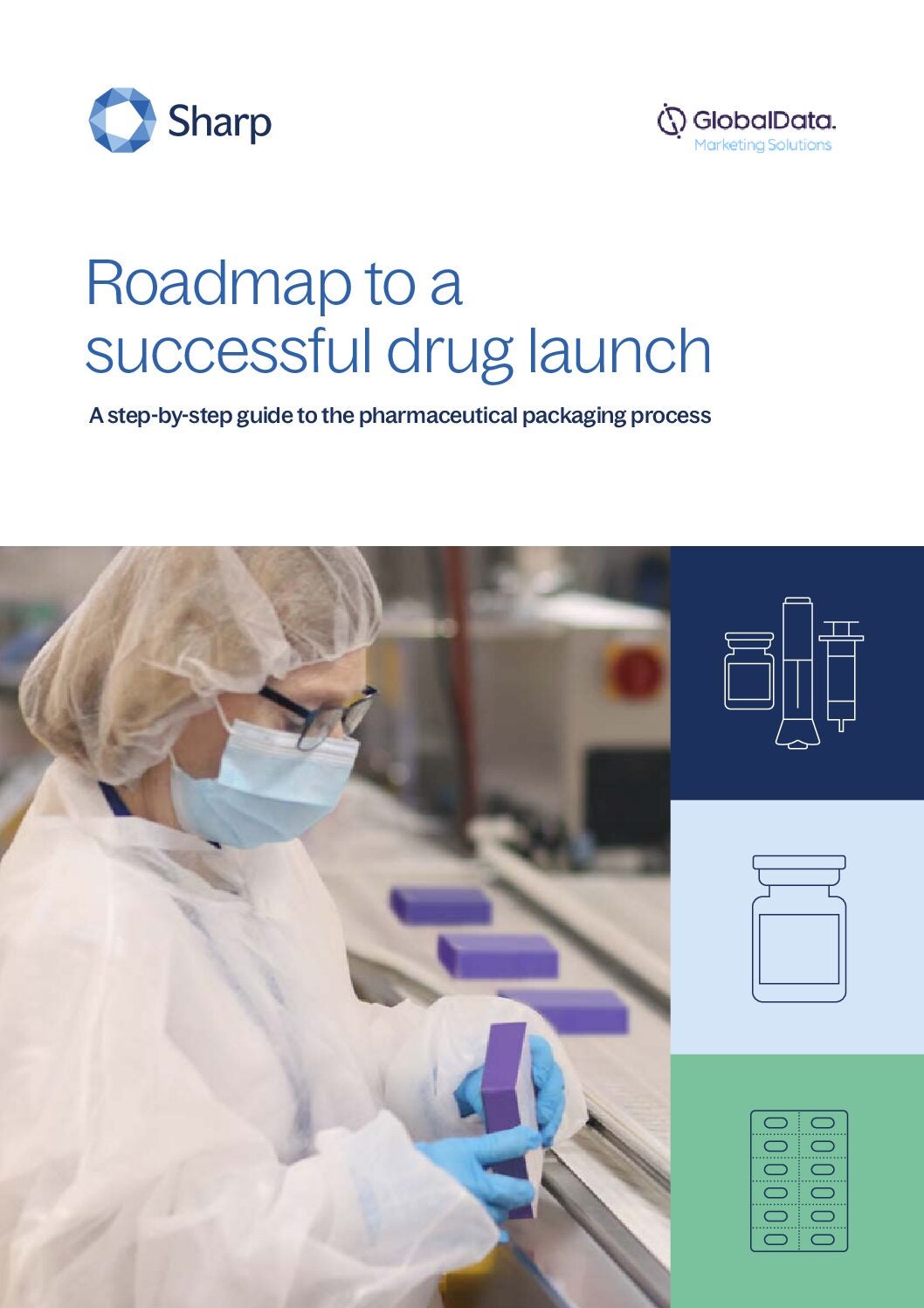
According to GlobalData, the keyword ‘emissions’ was mentioned 6,272 times across the company filings of pharma organizations in 2023 – a sizeable increase of 33% from just one year previously, and a substantial 542% rise from 2016. Sustainability continues to drive significant organizational transformation across all industries as the challenge of delivering to net zero emissions targets rapidly approaches.
While some large pharma corporations are targeting carbon neutrality in just a few years, many have committed to a 2030 deadline. Considering the magnitude of change required to achieve this, and the simultaneous predicted increase in demand for carbon-intensive pharmaceutical products such as injectables, time is of the essence.
Meeting demand while delivering on sustainability for pharma products
As the world’s population gets older and access to medicines improves in developing countries, pharmaceutical manufacturing faces growing demand. The introduction of new therapeutic modalities and other innovations will also play a part in humanity’s increasing reliance on medicines. The new class of weight loss and diabetes drugs is a good example, with GlobalData projecting sales of GLP-1 agonists to hit $37.1bn by 2031.
The question is, therefore, how can the industry achieve the necessary emissions reductions as demand for its products increases? According to Hywel Woolf, Sustainability Manager at Sharp, energy efficiency improvements and sustainable sourcing programs are critical.
“Pharma can be a very energy-intensive sector,” explains Woolf. “The US pharma sector alone consumes over $1bn of energy annually and this is increasing. The good news is that a reduction in energy use, sourcing energy from renewable sources, and more efficient use of energy will deliver improved environmental outcomes as well as financial savings.”
Even simple changes made in offices and manufacturing sites can have a big impact, such as motion sensor-based LED lighting. There is also a need for larger investments such as HVAC upgrades, building insulation, and the installation of solar panels and geothermal wells. With major players such as GSK disclosing that Scope 3 emissions make up 92% of their carbon footprint1, and Merck reporting 79.9% in 20222, the importance of finding supply chain partners focused on implementing sustainable changes cannot be stressed enough.
Implementing eco-design principles throughout a product’s development is also a critical lever to reducing carbon emissions, especially considering the industry’s contributions of 300 million tonnes of plastic waste each year. Injectable drug delivery devices – including autoinjectors, pens and prefilled syringes – typically have a strong reliance on materials with high carbon footprints, as well as single-use plastics, and therefore will require considerable redesigns to reduce their embedded carbon.
Opportunities and challenges for injectables eco-design
Eco-design will play an essential role in the future of injectable pharmaceutical products. Single-use plastic devices represent the biggest problem right now but also a sizeable opportunity for improvement, since a switch from single-use devices to multi-use can have a huge impact. From redesigning the device to enable easier disassembly for reuse to simple changes in a device’s colors, eco-design principles could make a big difference to the circularity of injectable packaging.
“The more colors used, the more difficult it becomes to recycle that device and ultimately the plastic is likely to end up in incineration,” says Woolf. “This could be an easy change on the regulatory side as well. To support disassembly and recycling, the regulators could, for example, tell the industry to limit injectable devices colors where possible and use the same color for the main housing.”
Being of natural origins and easier to recycle, glass is sometimes thought of as a sustainable alternative to plastic. In reality, contamination concerns have limited the use of recycled glass in the pharma industry, placing more emphasis on virgin glass production, which is historically more carbon-intensive. These kinds of hurdles represent just one of the many challenges the pharmaceutical sector faces when attempting to introduce eco-friendly materials, where designing products for reuse, disassembly and end-of-life may be a consideration but rarely a priority.
“We operate in what has to be a heavily regulated market, and there are substantial regulatory, technical, and marketing constraints to making a sustainable change to a pharmaceutical product,” explains Alexander Schäfer, Business Development Manager at Sharp. “If a product needs to go into a glass syringe because that is the only material guaranteeing its stability, you can’t change it to a wooden container or carton. To make a more sustainable product, you are fully dependent on sustainable sourcing instead, i.e. determining whether you can source that same material from a more sustainable vendor using green energy to manufacture the product, for example.”
Another key challenge is the limited availability of viable alternatives, adds Schäfer. While primary packaging will always face the most limitations, he says sustainable alternatives are more readily available and easier to implement in secondary packaging materials. As with any production change, however, they can require substantial investment.
“It’s a commercial as well as an environmental decision whether or not to push for change,” says Schäfer. “If you have a packaging line for pre-forming an inline plastic tray, for example, and you want to change that tray to paper, the machine can’t handle that. You might have dozens of packaging lines for those plastic inline trays, and it would be a massive investment to replace them.”
The changing role of the CPO in sustainable pharma
As pharmaceutical companies navigate these challenges, they are increasingly leaning on the support and advice of their contract packaging organizations (CPOs) to understand their options. This marks an important shift in the once highly prescriptive client-CPO relationship. Collaborations with suppliers and specifically with CPOs are now recognized as one of the key levers to achieving ambitious sustainability goals when it comes to tackling the high carbon footprint of injectable devices.
Ultimately, product-related decisions will always sit with the client, notes Schäfer, but CPOs can exert influence by bringing sustainable options to the table during the tendering process.
“We really collaborate with our clients to help their specific packaging design and requirements become a reality and a success when it comes to new, innovative sustainable design,” he says. Examples of those collaborations range from helping a client to redesign a carton that reduces the item’s carbon footprint by 20% (at no additional manufacturing cost) to supporting the development of a lighter primary packaging concept that reduces plastic use and saves costs – all while assuring the same containment properties. There is huge potential for CPOs to deliver additional value for their clients by identifying and supporting sustainable innovations in both processes and materials.
The magnitude of the challenge means that partnerships between supply chain companies themselves will also be essential in helping the industry realize net-zero emissions. Founded in 2021 by eight different companies in the pharmaceutical supply chain, the Alliance to Zero is one such initiative committed to facilitating the transition to net zero pharma products. By sharing detailed product data, each found member, including Sharp and Ypsomed, created a detailed product carbon footprint of the autoinjector. The alliance is now working together to implement carbon reduction strategies to improve how it is produced across the supply chain.
The combination of individual projects and collaborations will make a difference, but industry-wide transformations require regulators to get on board with the sustainability mission.
“We really need leadership and an appetite for pragmatic change to regulations in order to realize these sustainable solutions that are being proposed by pharma suppliers. This would encourage broader behavioral change across our industry and the adoption of true eco-friendly solutions. This means eco-friendly design, material selection, designing for end-of-life and circularity, which is supported and enabled by regulators, whilst continuing to put patient safety a priority,” concludes Woolf.
For more information on how Sharp can support commercialization and timely product launches, download the paper below.
[1] https://www.gsk.com/en-gb/responsibility/environment/climate/#:~:text=Our%20climate%20targets,-To%20deliver%20our&text=Net%20zero%20greenhouse%20gas%20emissions,and%20all%20residual%20emissions%20neutralised
[2] https://www.pharmaceutical-technology.com/features/pharmas-path-to-net-zero-targeting-scope-3-emissions/



